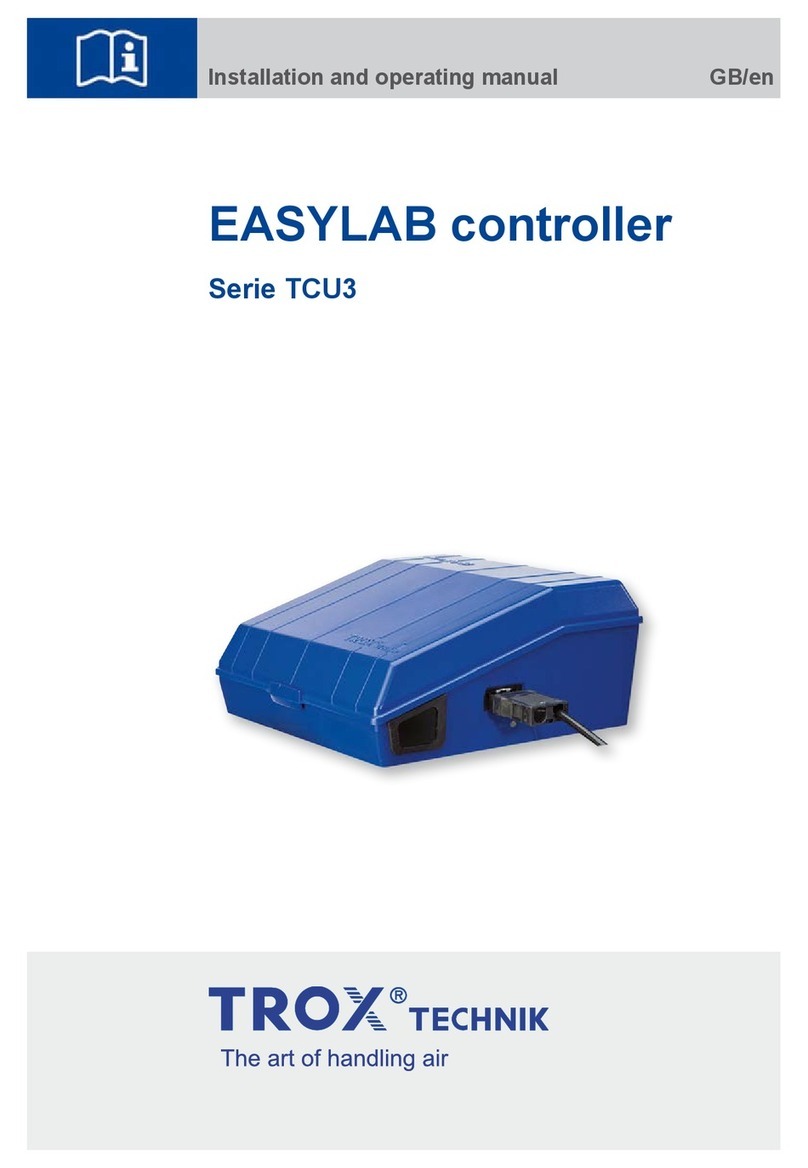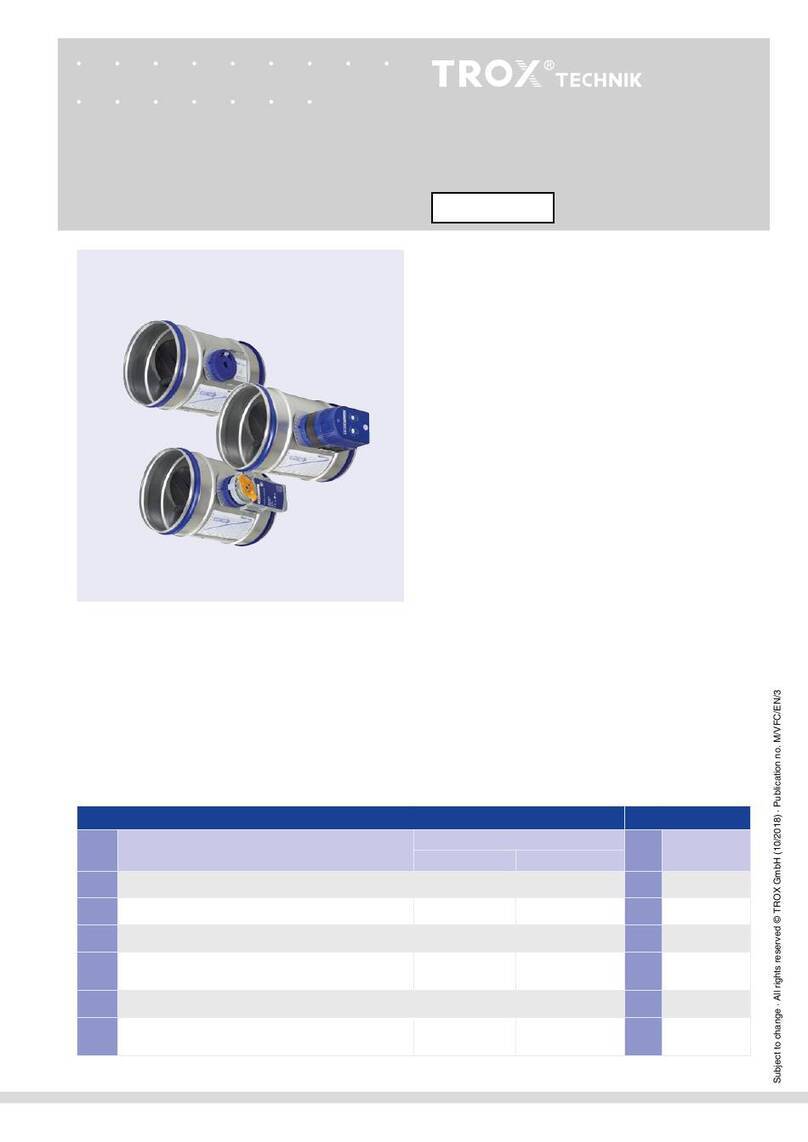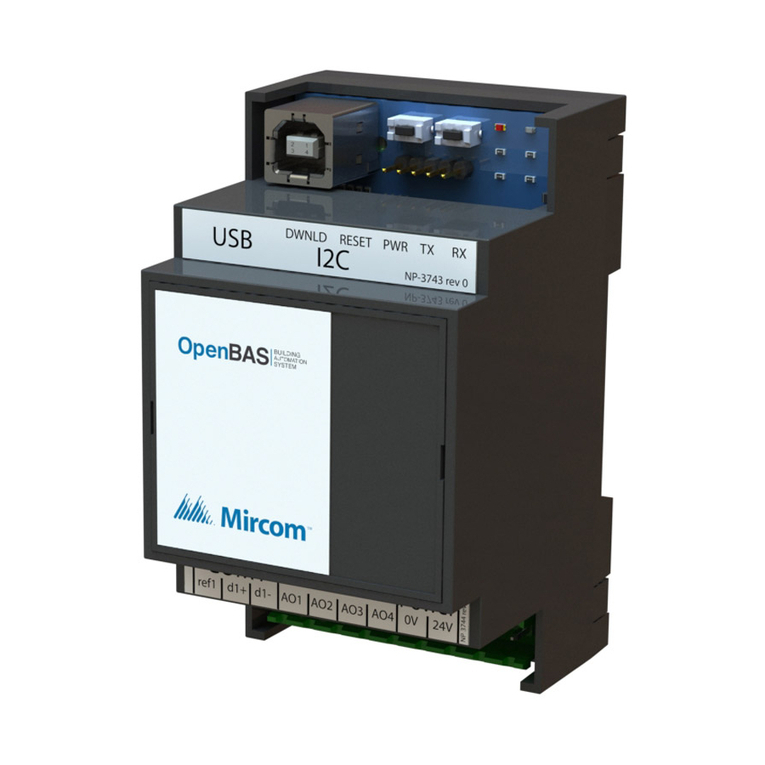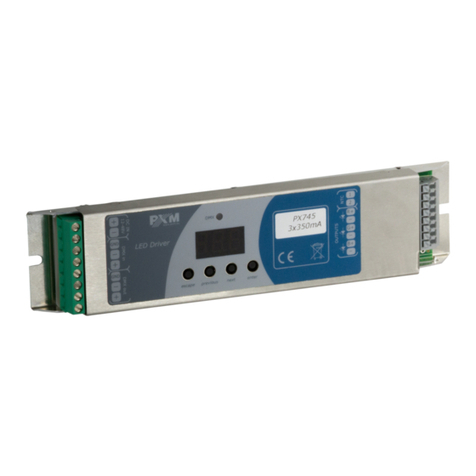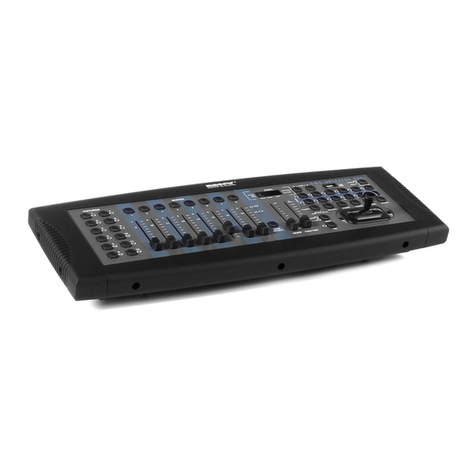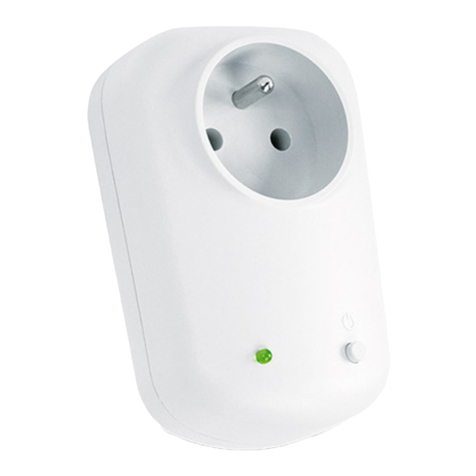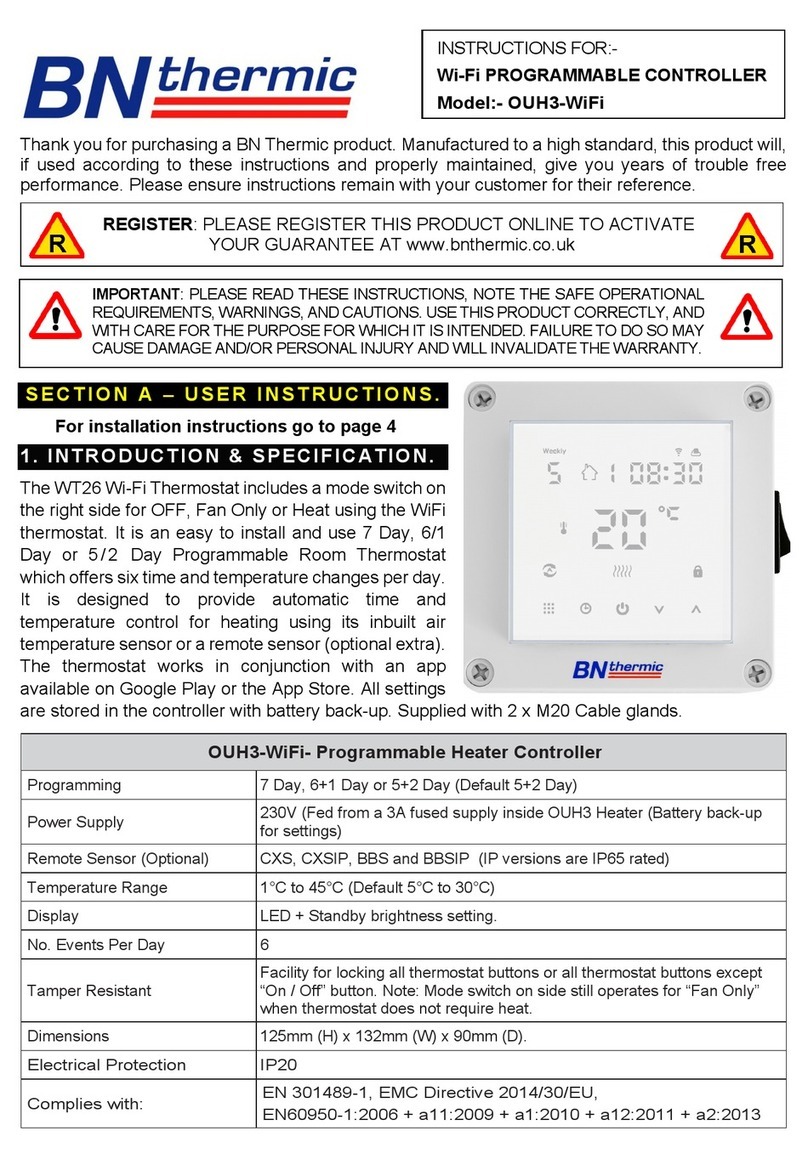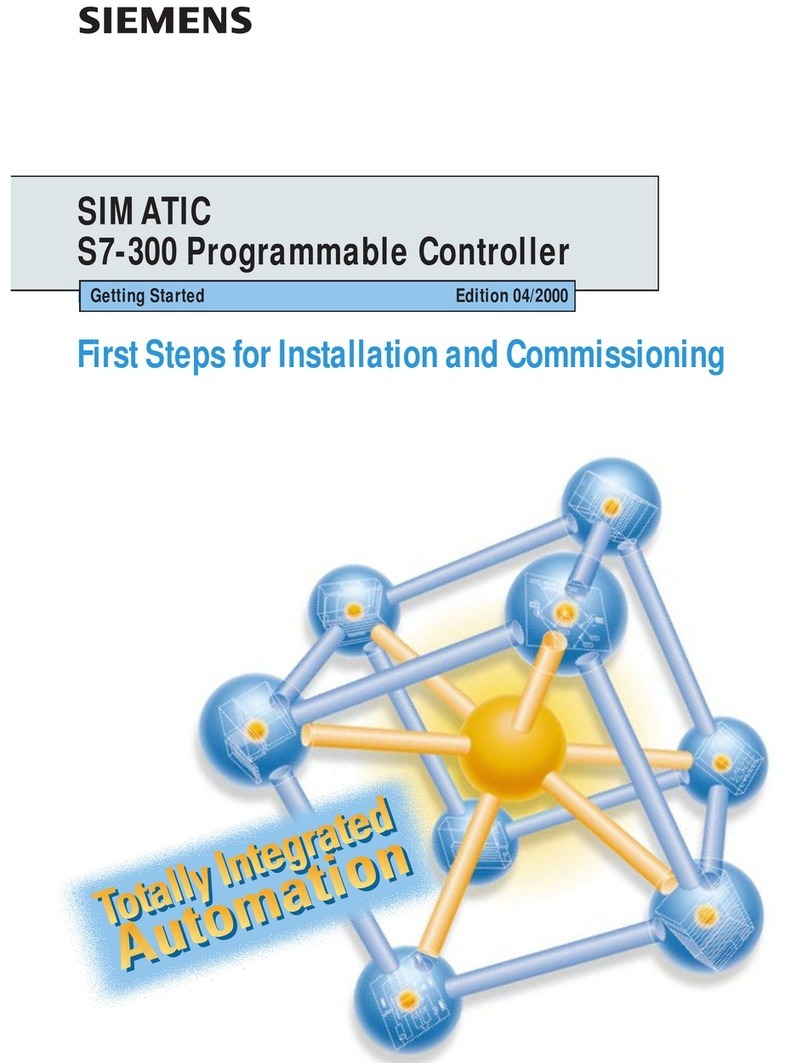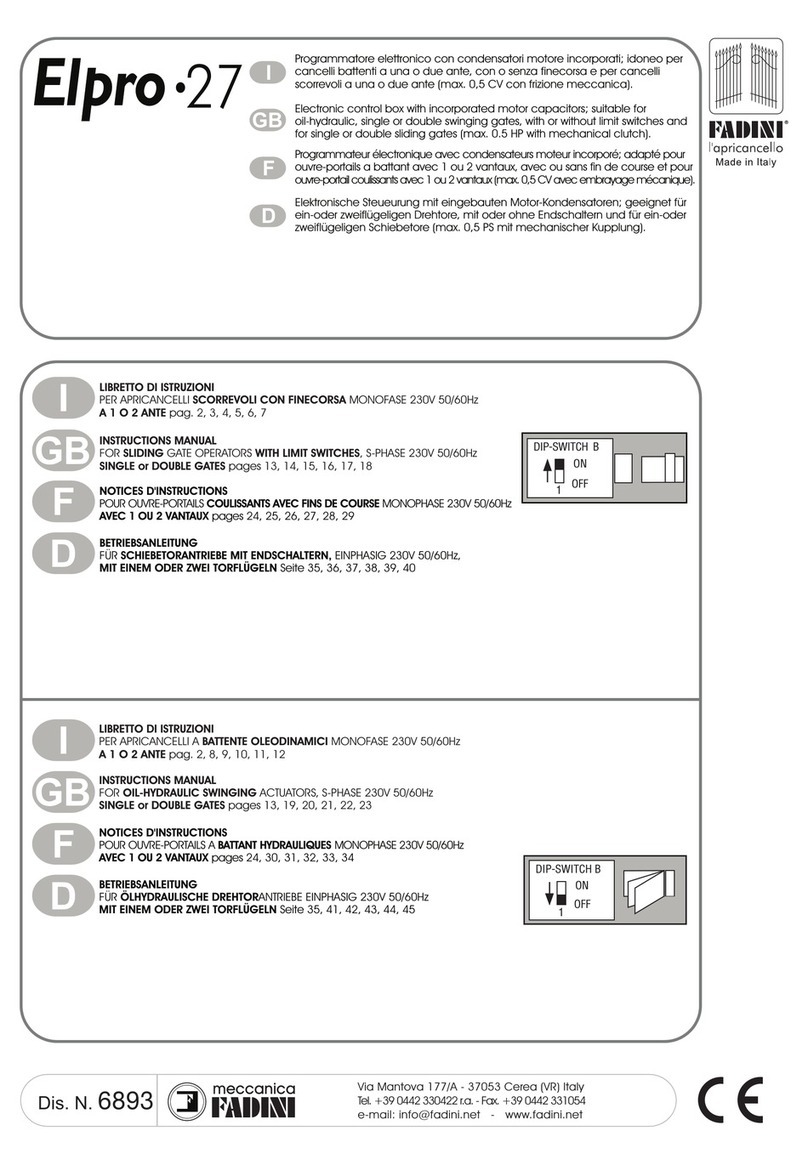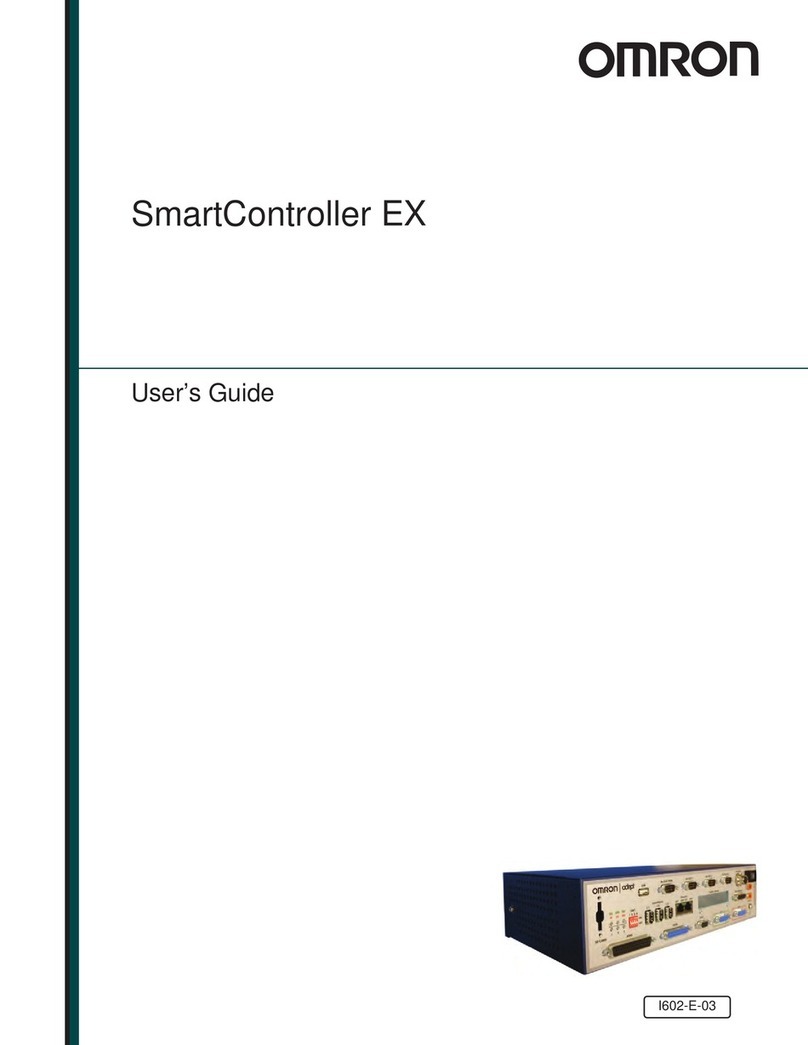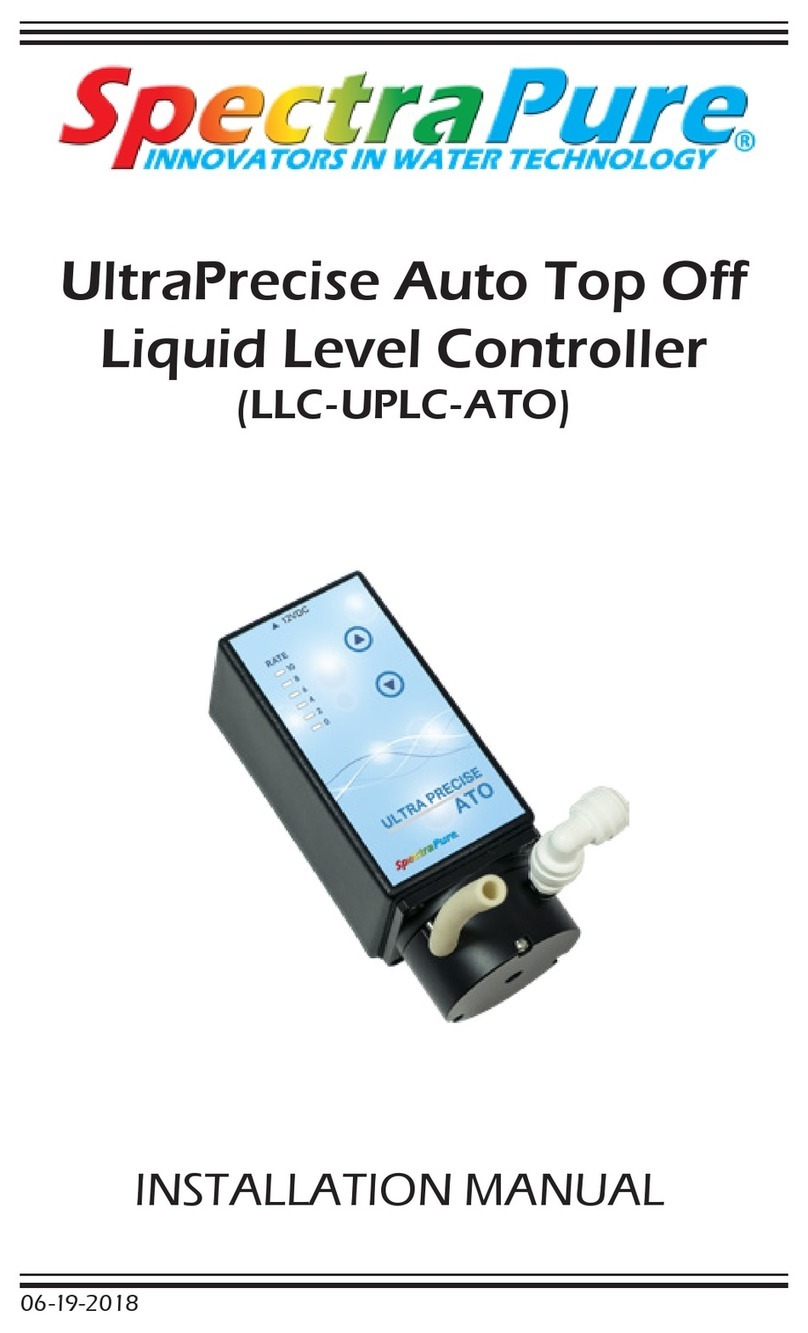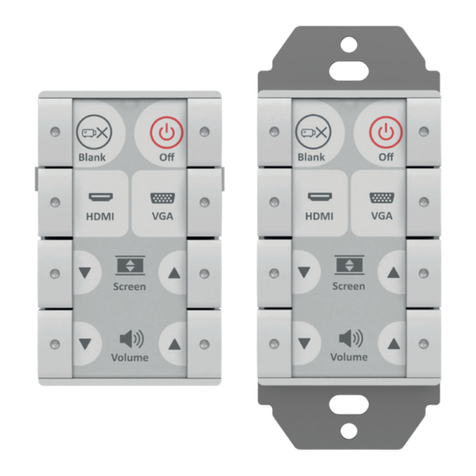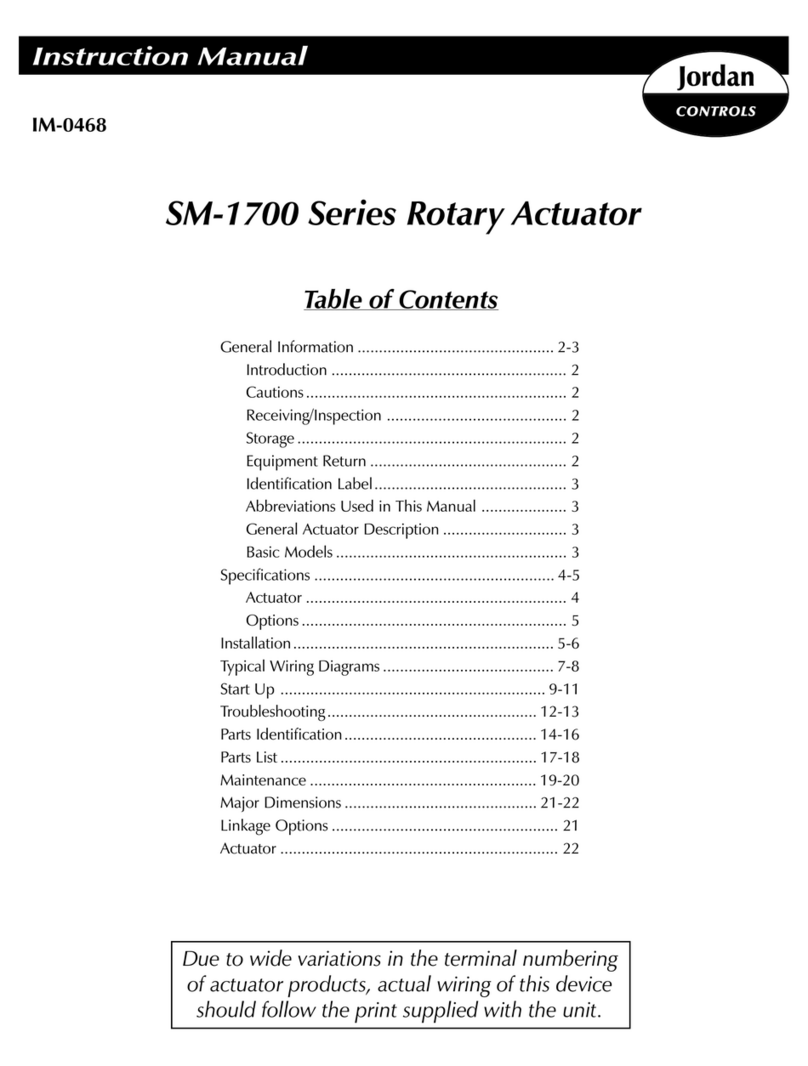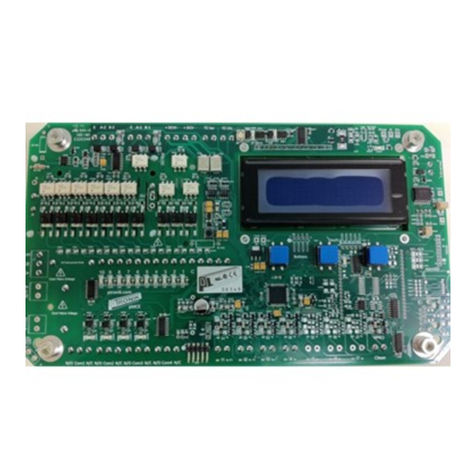Trox EN-Ex User manual

Product overview
⑤④
③
⑧
⑨
①
⑥
②
⑦
Fig. 1: EN-Ex
①Scale
②Volume flow rate scale lock
③Crossbar
④Blade connector for equipotential bonding
(2 ground straps and 2 blade connectors are
part of the supply package)
⑤Cam plate
⑥Leaf spring
⑦Bellows inlet
⑧Bellows
⑨Damper blade
Important notes
Information on the installation manual
This manual enables operating or service personnel
to correctly install the product described below and
to use it safely and efficiently.
It is essential that these individuals read and fully
understand this manual before starting any work.
The basic prerequisite for safe working is to comply
with the safety notes and all instructions in this
manual.
The local regulations for health and safety at work
and general safety regulations also apply.
Correct use
CAV controllers of Type EN-Ex are used for con-
stant volume flow control in ventilation and air con-
ditioning systems. They can be used for supply air
and extract air systems in the following areas with
potentially explosive atmospheres:
II 2G Ex h IIC T6 Gb
II 2D Ex h IIIC T80 °C Db
Test certificate TÜV 05 ATEX 7159 X
Do not use the CAV controller with an electric
actuator!
Do not use CAV controllers in extract air systems in
commercial kitchens unless the extract air has been
cleaned as much as possible with high-sufficiency
aerosol separators; see VDI 2052.
The installation of air terminal devices in humid
rooms, areas with potentially explosive atmos-
pheres or rooms with dust-laden or aggressive air
has to be assessed for each individual case.
Installation manual GB/en
CAV controllers
EN-Ex
TROX GmbH
Heinrich-Trox-Platz
47504 Neukirchen-Vluyn
Germany
Phone: +49 (0) 2845 2020
Fax: +49 (0) 2845 202-265
E-mail: [email protected]
http://www.troxtechnik.com
A00000063847, 08/2017, © 2017 TROX GmbH
CAV controllers EN-Ex 1

TROX Technical Service
To ensure that your request is processed as quickly
as possible, please keep the following information
ready:
Product name
TROX order number
Delivery date
Brief description of the fault
Online www.troxtechnik.com
Phone +49 2845 202-400
Qualified staff
HVAC technician for Ex areas
HVAC technicians are individuals who have suffi-
cient professional or technical training in the field
they are working in to enable them to carry out their
assigned duties at the level of responsibility allo-
cated to them and in compliance with the relevant
guidelines, safety regulations and instructions.
HVAC technicians are individuals who have in-
depth knowledge and skills related to HVAC sys-
tems; they are also responsible for the professional
completion of the work under consideration.
HVAC technicians are individuals who have suffi-
cient professional or technical training, knowledge
and actual experience to enable them to work on
HVAC systems, understand any potential hazards
related to the work under consideration, and recog-
nise and avoid any risks involved.
HVAC technicians for Ex areas have been specially
trained for work in areas with potentially explosive
atmospheres. They know the rules and regulations
relevant to their work and to explosion protection.
Evidence of the relevant experience and training
claimed must be available.
Personal protective equipment
Personal protective equipment must be worn for
any work in order to reduce health or safety haz-
ards to the minimum.
The appropriate protective equipment for a job must
be worn for as long as the job takes.
Industrial safety helmet
Industrial safety helmets protect the head from
falling objects, suspended loads, and the effects of
striking the head against stationary objects.
Protective gloves
Protective gloves protect hands from friction, abra-
sions, punctures, deep cuts, and direct contact with
hot surfaces.
Safety shoes
Safety shoes protect the feet against crushing,
falling parts, and slipping on slippery ground.
Limitation of liability
The information in this manual has been compiled
with reference to the applicable standards and
guidelines, the state of the art, and our expertise
and experience of many years.
The manufacturer does not accept any liability for
damages resulting from:
Non-compliance with this manual
Incorrect use
Operation or handling by untrained individuals
Unauthorised modifications
Important notes
CAV controllers EN-Ex2

The actual scope of delivery may differ from the
information in this manual for special constructions,
additional order options or as a result of recent
technical changes.
Transport and storage
Delivery check
Upon delivery, carefully remove the packaging and
check the unit for transport damage and complete-
ness. In case of any damage or an incomplete ship-
ment, contact the shipping company and your sup-
plier immediately. Put the product back into its
packaging after the delivery check to protect it from
dust and contamination.
Fixing and installation material
Fixing and installation material is not part of the
supply package (unless stated otherwise), but
has to be provided by others; it has to be suitable
for the installation situation.
Transport on site
CAUTION!
Danger of injury from sharp edges, sharp cor-
ners and thin sheet metal parts!
Sharp edges, sharp corners and thin sheet metal
parts may cause cuts or grazes.
– Be careful when carrying out any work.
– Wear protective gloves, safety shoes and a
hard hat.
Please note:
Be careful when unloading or moving the
product, and pay attention to the symbols and
information on the packaging.
If possible, take the product in its transport
packaging up to the installation location.
Use only lifting and transport gear designed for
the required load.
Always secure the load against tipping and
falling.
Do not move bulky items just by yourself. Get
help to prevent injuries and damage.
Storage
Please note:
Store the product only in its original packaging
Protect the product the effects of weather
Protect the product from humidity, dust and
contamination
Storage temperature: -10 °C to 50 °C.
Relative humidity: 95% max., no condensation
Packaging
Properly dispose of packaging material.
Technical data
Nominal sizes 200 × 100 to 600 × 600 m
m
Volume flow rate range 40 – 3360 l/s or 144 –
12096 m³/h
Volume flow rate control
range
Approx. 25 to 100% of the
nominal volume flow rate
Scale accuracy ± 4%
Minimum differential pres-
sure
50 Pa
Maximum differential pres-
sure
1000 Pa
Operating temperature 10 – 50 °C
Transport and storage
CAV controllers EN-Ex 3

Dimensions and weight
m³/h
m³/h
l/s
900
1200
1500
1800
2100
2400
2700
3000
360
480
600
720
EN–EX 400 x 200
B
400
H
Ø13×20 B₁
H₁
B₂
H₂
Fig. 2: EN-Ex
m³/h
m³/h
l/s
900
1200
1500
1800
2100
2400
2700
3000
360
480
600
720
EN–EX 400 x 200
B
H
400
M8
B₁
H₁
H₂
B₂
Fig. 3: EN-Ex-D (with acoustic cladding)
Nominal size Nom-
inal
width
B
[mm]
Nom-
inal
height
H
[mm]
B1
[mm]
H1
[mm]
EN-Ex EN-Ex-D
B2
[mm]
H2
[mm]
m
[kg]
B2
[mm]
H2
[mm]
m
[kg]
200 × 100 200 100 234 134 276 176 5 280 180 8
300 × 100 300 100 334 134 376 176 6 380 180 10
300 × 150 300 150 334 184 376 226 7 380 230 11
300 × 200 300 200 334 234 376 276 7 380 280 12
Technical data
CAV controllers EN-Ex4

Nominal size Nom-
inal
width
B
[mm]
Nom-
inal
height
H
[mm]
B1
[mm]
H1
[mm]
EN-Ex EN-Ex-D
B2
[mm]
H2
[mm]
m
[kg]
B2
[mm]
H2
[mm]
m
[kg]
400 × 200 400 200 434 234 476 276 9 480 280 15
400 × 250 400 250 434 284 476 326 10 480 330 17
400 × 300 400 300 434 334 476 376 12 480 380 18
400 × 400 400 400 434 434 476 476 18 480 480 26
500 × 200 500 200 534 234 576 276 11 580 280 17
500 × 250 500 250 534 284 576 326 12 580 330 18
500 × 300 500 300 534 334 576 376 13 580 380 19
500 × 400 500 400 534 434 576 476 18 580 480 26
500 × 500 500 500 534 534 576 576 19 580 580 28
600 × 200 600 200 634 234 676 276 13 680 280 20
600 × 250 600 250 634 284 676 326 14 680 330 22
600 × 300 600 300 634 334 676 376 15 680 380 22
600 × 400 600 400 634 434 676 476 18 680 480 26
600 × 500 600 500 634 534 676 576 19 680 580 29
600 × 600 600 600 634 634 676 676 20 680 680 30
Installation
Installation orientation
Any installation orientation. Airflow direction is crit-
ical.
Upstream conditions
The volume flow rate accuracy of CAV controllers
applies to a straight upstream section of the duct.
Bends, junctions or a narrowing or widening of the
duct cause turbulence that may affect measure-
ment. Duct connections, e.g. branches off the main
duct, must comply with EN 1505. Some installation
situations require straight duct sections upstream.
Duct, horizontal Duct, vertical
Bend
1,5B
B
Bend
1,5H
H
Junction
B
1,5B
Junction
1,5H
H
Installation
CAV controllers EN-Ex 5

Free air intake only with a straight duct section of
1B upstream.
Installing the CAV controller
Personnel:
HVAC technician for Ex areas
Protective equipment:
Industrial safety helmet
Protective gloves
Safety shoes
WARNING!
Risk of explosion from the commissioning of
damaged products
Commissioning damaged products in areas with
potentially explosive atmospheres may lead to an
explosion. This can cause serious or even fatal
injuries as well as considerable damage to prop-
erty.
Before you install the controller, check it for
damage that could impair the movement of the
damper blade; if the controller has been dam-
aged, replace it.
Before you install the product, take suitable precau-
tions to protect air distribution components from
contamination during installation (VDI 6022). If this
is not possible, at least cover the product or take
other precautions to protect it from contamination.
In this case you have to ensure that the product
cannot be started. Ensure that all components are
clean before you install them. If necessary, clean
them thoroughly. If you have to interrupt the installa-
tion procedure, protect all openings from the
ingress of dust or moisture.
Installation
CAV controllers EN-Ex6

WARNING!
Risk of explosion!
Ignition sources, such as sparks, open flames or
hot surfaces, can lead to explosions in an area
with potentially explosive atmospheres.
– Get written permission before you start
working in an area with potentially explosive
atmospheres.
– Do not carry out any work in a potentially
explosive atmosphere.
To remove any potentially explosive atmos-
phere, purge the system with fresh air
before you work on it.
– Use only tools that have been approved for
use in areas with potentially explosive
atmospheres.
Failure to comply with these safety notes may
lead to an explosion.
For installation please note:
Fix the product only to load-bearing structural
elements.
Load suspension systems only with the weight
of the product. Adjacent components and con-
necting ducts must be supported separately.
Use only approved and adequately sized fixing
material (fixing material is not included in the
supply package).
The product must remain accessible for main-
tenance even after installation.
Important: If there is a risk that the controller
could be subject to mechanical impact during
operation, protect it accordingly; protection has
to be provided by others.
Be careful to not damage the controller accidentally:
Handle the unit with care.
Lift the unit only by lifting the entire casing.
Do not lift the unit or device by holding the
damper blade only.
① ② ③
④④ ⑤⑤ ⑥⑥⑧ ⑦ ⑤
Fig. 4: Installation example
1. Pre-assemble suspensions (Fig. 4/4) at the
installation location, at a distance of approx.
L+100 mm.
2. Assemble the ducts (Fig. 4/3) and lead them
up to the installation location of the con-
troller.
3. Fix the controller (Fig. 4/1) including seals
(Fig. 4/7) to the duct (note the airflow direc-
tion marked by the arrow (Fig. 4/2).
4. Fix the ducts and the controller to the sus-
pension system.
5. Make the equipotential bonding (Fig. 4/6)
using ground strap and blade connector
(Fig. 4/5).
Installation
CAV controllers EN-Ex 7

WARNING!
Risk of explosion!
To prevent electrostatic ignition hazards,
make an electrical connection by con-
necting the controller with the ground
straps and blade connectors (part of the
supply package) on both sides to the
ducting.
It is also possible to connect the controller
directly to the terminal point for equipoten-
tial bonding of the building. This requires
a cable (by others).
In any case, the ductwork has to be con-
nected to the terminal point for equipoten-
tial bonding of the building.
Installation
CAV controllers EN-Ex8

Initial commissioning
WARNING!
Risk of explosion from the commissioning of
damaged products
Commissioning damaged products in areas with
potentially explosive atmospheres may lead to an
explosion. This can cause serious or even fatal
injuries as well as considerable damage to prop-
erty.
Before you commission the controller, check it for
damage that could impair the movement of the
damper blade; if the controller has been dam-
aged, replace it.
Before you start commissioning:
Ensure that the device or unit has been cor-
rectly fixed and connected to the ducting.
Ensure equipotential bonding of the device or
unit.
Ensure that the devices or units as well as the
ventilation system are clean and that there are
no residual matter and foreign objects.
Important: If there is a risk that the controller
could be subject to mechanical impact during
operation, protect it accordingly; protection has
to be provided by others.
For commissioning see also VDI 6022, part 1 – 'Hy-
giene requirements for ventilation and air-condi-
tioning systems and units'.
WARNING!
Risk of explosion!
Ignition sources, such as sparks, open flames or
hot surfaces, can lead to explosions in an area
with potentially explosive atmospheres.
– Get written permission before you start
working in an area with potentially explosive
atmospheres.
– Do not carry out any work in a potentially
explosive atmosphere.
To remove any potentially explosive atmos-
phere, purge the system with fresh air
before you work on it.
– Use only tools that have been approved for
use in areas with potentially explosive
atmospheres.
Failure to comply with these safety notes may
lead to an explosion.
Sufficient duct pressure must be ensured for all
operating conditions and for all control units. The
measurement points for fan speed control must be
selected accordingly.
Setting the volume flow rate
Loosen the wing screw (Fig. 1/2) and set the
volume flow rate on the scale (Fig. 1/1).
Lock the scale in the required position with
the wing screw (Fig. 1/2).
No further measurement or adjustment is
necessary.
Volume flow rate setting ranges
Nominal size [l/s] (m³/h)
min max min max
200 × 100 40 160 144 576
300 × 100 65 260 234 936
300 × 150 105 420 378 1512
300 × 200 130 520 468 1872
400 × 200 210 840 756 3024
500 × 200 230 920 828 3312
Initial commissioning
CAV controllers EN-Ex 9

Nominal size [l/s] (m³/h)
min max min max
600 × 200 255 1020 918 3672
400 × 250 220 880 792 3168
500 × 250 300 1200 1080 4320
600 × 250 320 1280 1152 4608
400 × 300 315 1260 1134 4536
500 × 300 375 1500 1350 5400
600 × 300 420 1680 1512 6048
400 × 400 420 1680 1512 6048
500 × 400 460 1840 1656 6624
600 × 400 510 2040 1836 7344
500 × 500 600 2400 2160 8640
600 × 500 640 2560 2304 9216
600 × 600 840 3360 3024 12096
Maintenance and cleaning
WARNING!
Risk of explosion!
Ignition sources, such as sparks, open flames or
hot surfaces, can lead to explosions in an area
with potentially explosive atmospheres.
– Get written permission before you start
working in an area with potentially explosive
atmospheres.
– Do not carry out any work in a potentially
explosive atmosphere.
To remove any potentially explosive atmos-
phere, purge the system with fresh air
before you work on it.
– Use only tools that have been approved for
use in areas with potentially explosive
atmospheres.
Failure to comply with these safety notes may
lead to an explosion.
Maintenance
It is the system owner's duty to set up a mainte-
nance schedule, taking the actual operating condi-
tions (contamination, operating time etc.) of the
ventilation system into consideration.
Important: Do not lubricate the bearings of the
damper blade.
Maintenance jobs to be carried out regularly:
Visually check the controller for contamination,
damage and corrosion. Remove contamina-
tion; if the controller has been damaged, or if
there is any corrosion, replace the controller.
Check the fixing of the controller and of the
connected ductwork.
Check the equipotential bonding.
Maintenance and cleaning
CAV controllers EN-Ex10

Replacement parts
Incorrect replacement parts
WARNING!
Risk of injury from the use of incorrect
replacement parts!
Incorrect or faulty replacement parts pose a risk
to health and safety, and their use can cause
malfunction, damage to property and total failure
of equipment.
–Use only original replacement parts from
TROX.
Cleaning
Please note:
The cleaning intervals given in the VDI 6022
standard apply.
Clean surfaces with a damp cloth.
Use only common household cleaners, do not
use any aggressive cleaning agents.
Do not use cleaning agents that contain
chlorine.
Maintenance and cleaning
CAV controllers EN-Ex 11

Declaration of conformity
Declaration of conformity
CAV controllers EN-Ex12
This manual suits for next models
1
Table of contents
Other Trox Controllers manuals
Popular Controllers manuals by other brands
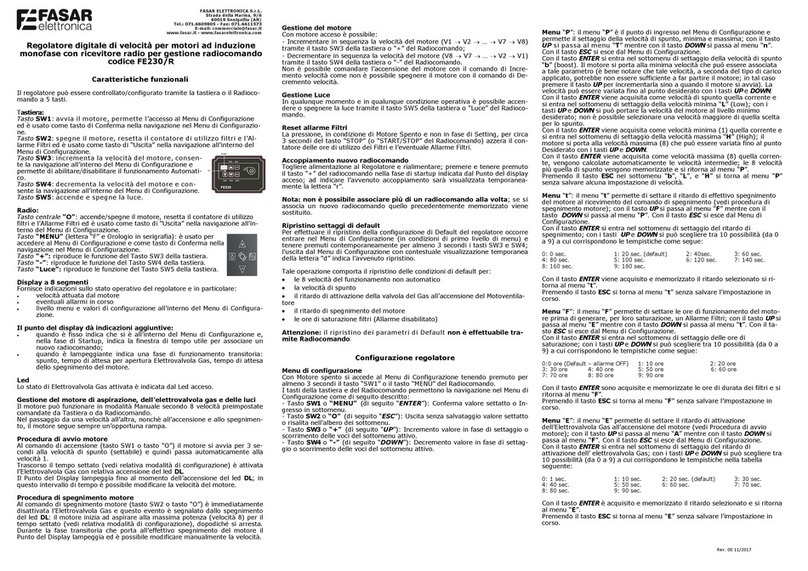
FASAR ELETTRONICA
FASAR ELETTRONICA FE230 manual
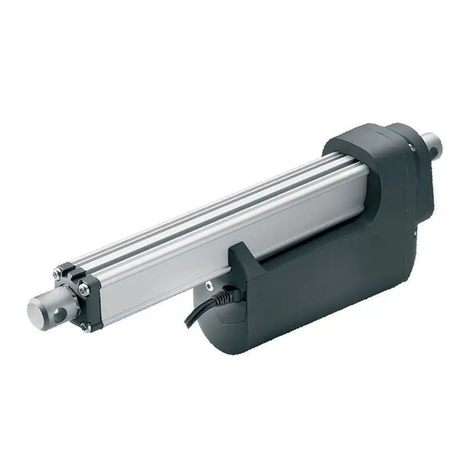
Linak
Linak ACTUATOR LA36 user manual

MIIDEX LIGHTING
MIIDEX LIGHTING Vision-EL 7656 Notice Instructions
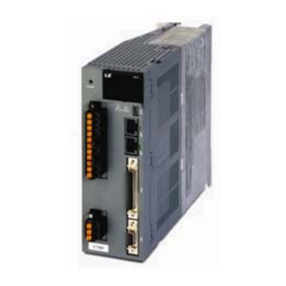
LSIS
LSIS XDL-L7SA002X user manual
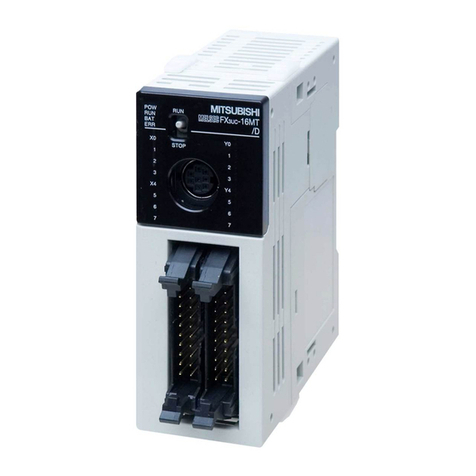
Mitsubishi Electric
Mitsubishi Electric MELSEC FX2NC-16MT-D/UL Hardware manual
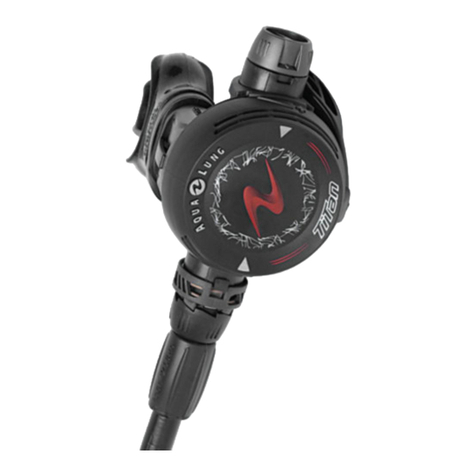
Aqua Lung
Aqua Lung Titan Technical bulletin
